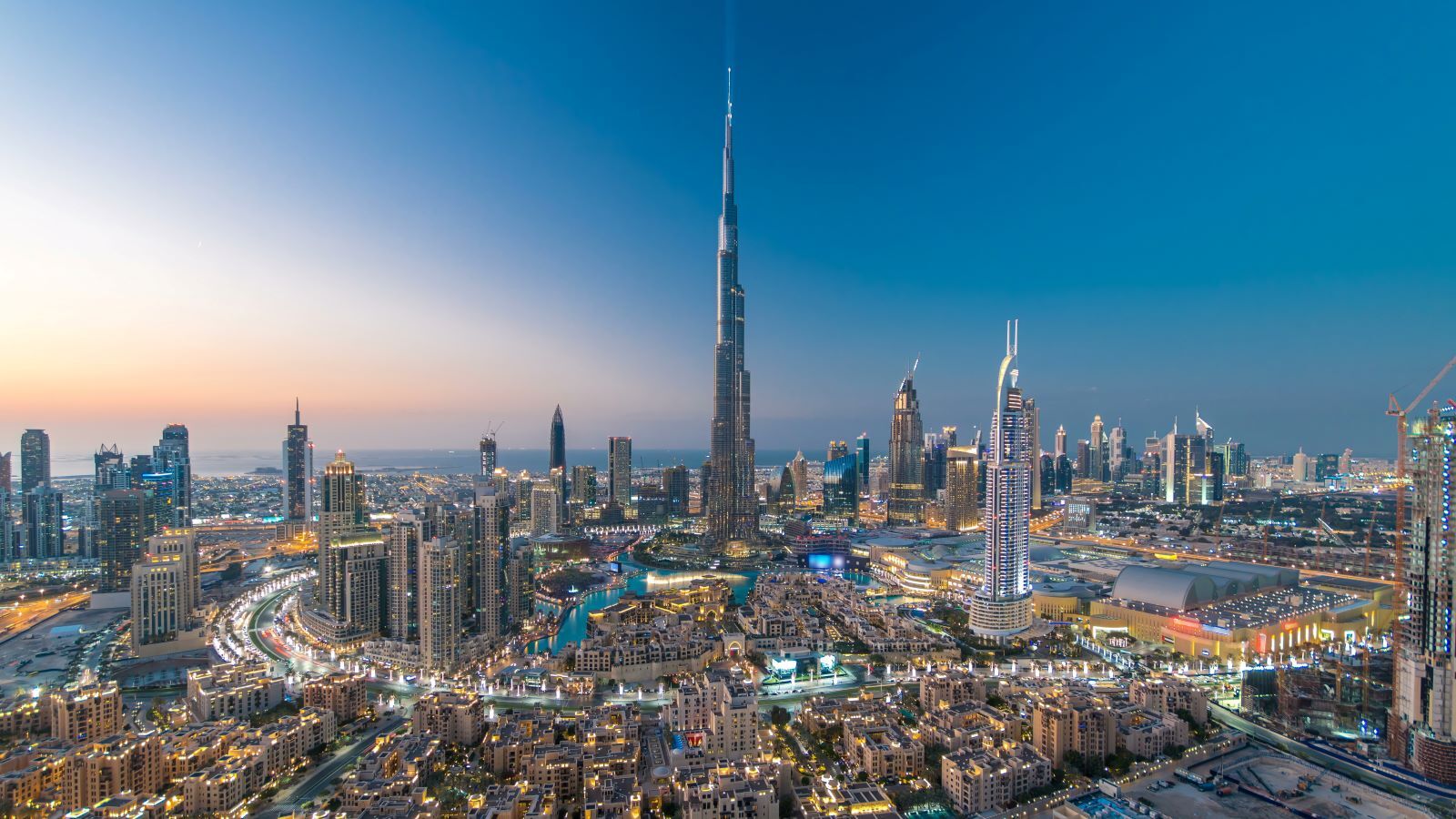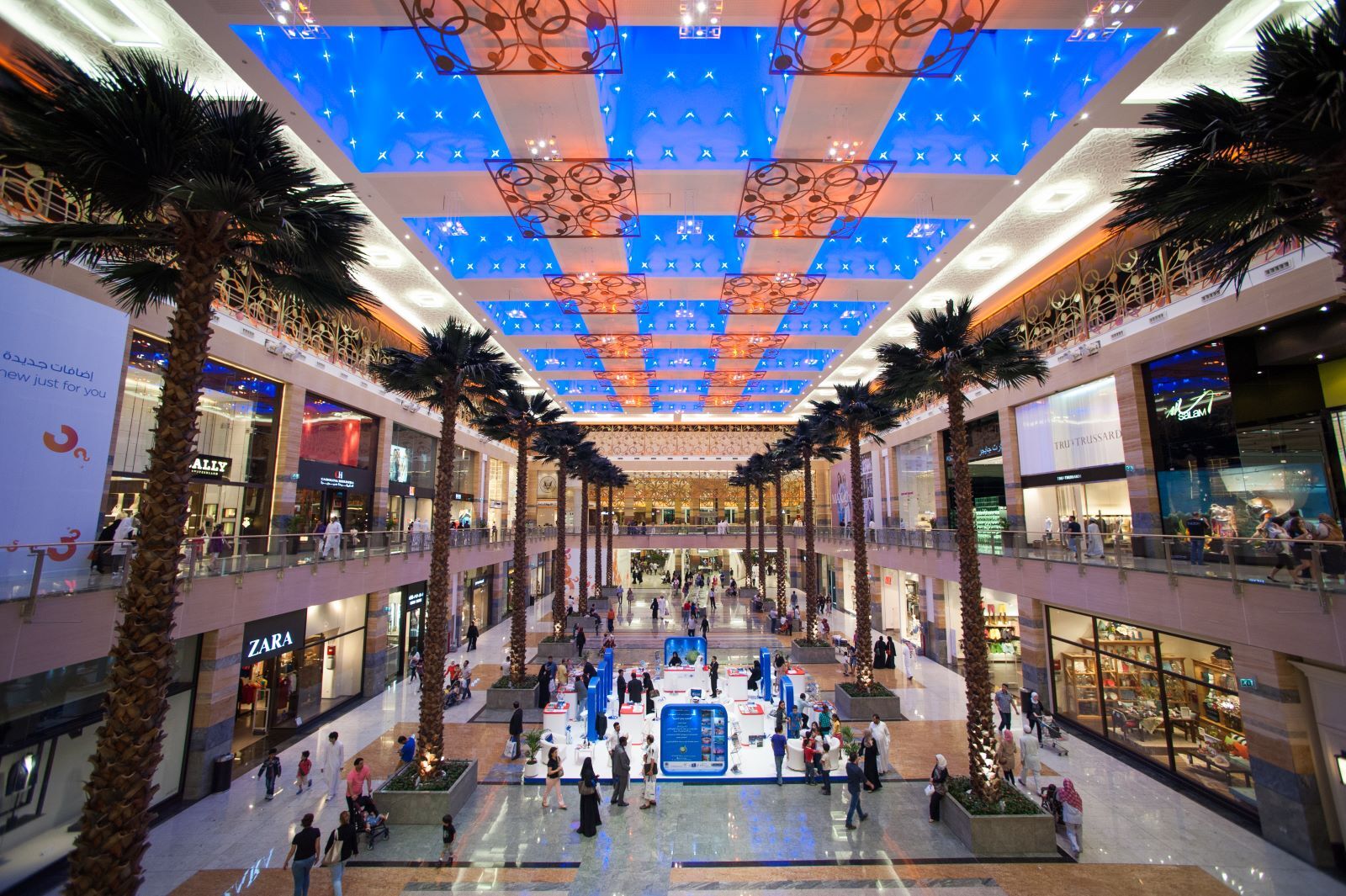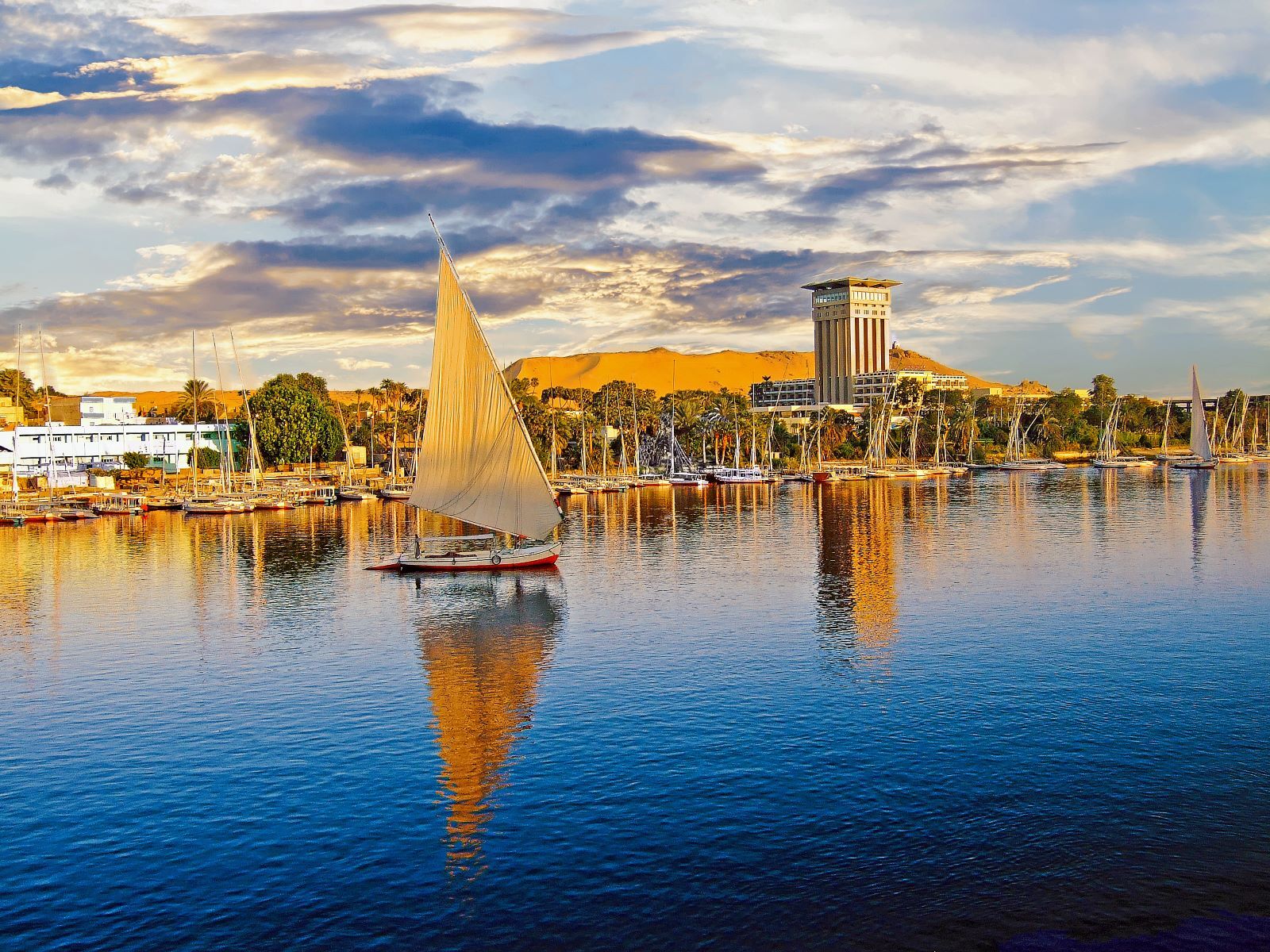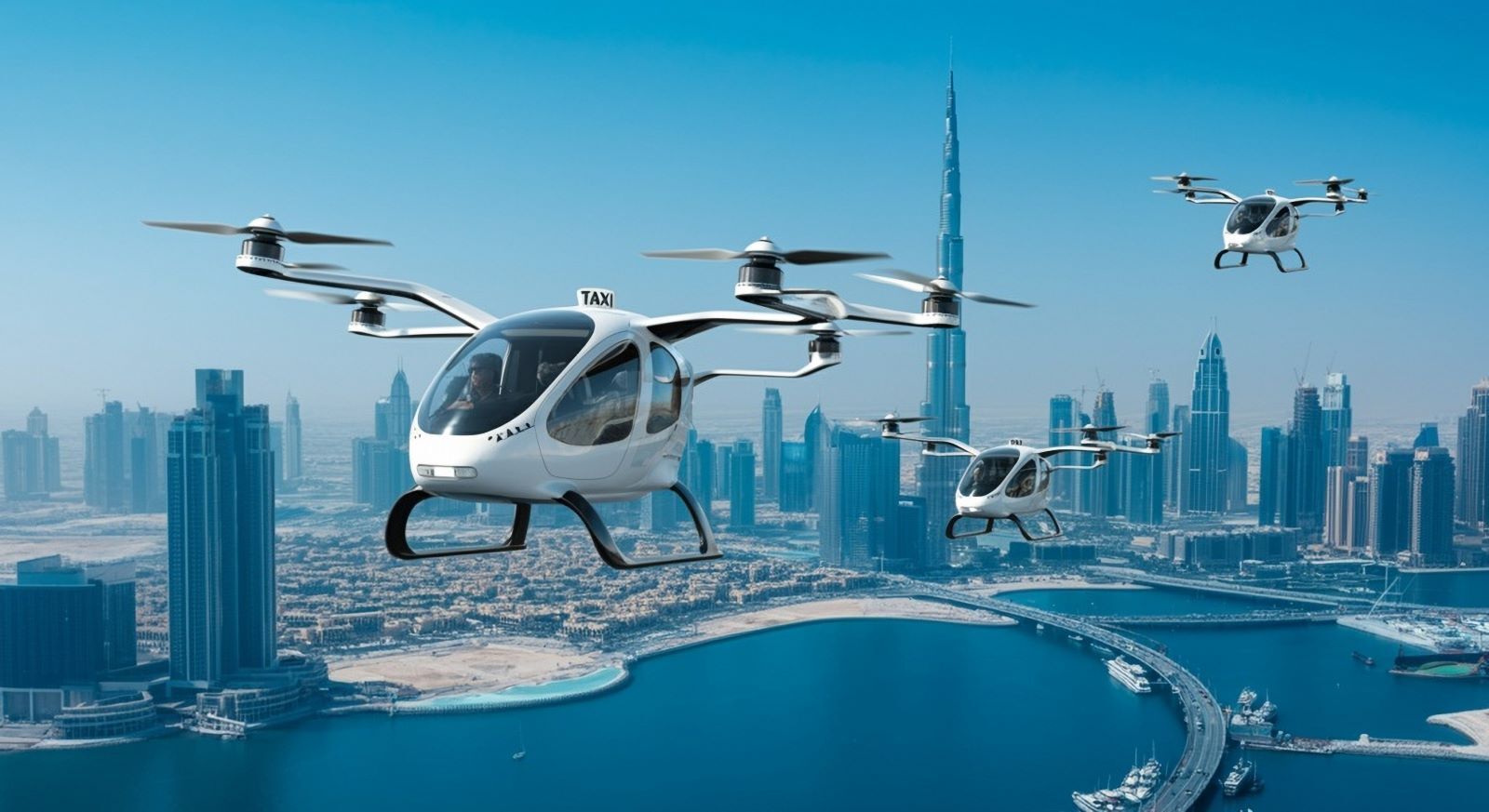A Journey Through Time: Inside Dubai’s Best Museums
To predict the future, we must first understand the past. In these two Dubai museums, you can explore both.
Dubai is a city of contrasts, where tradition meets innovation, and sprawling desert landscapes meet a thriving metropolis. The best place to learn more about the unique cultural identity of Dubai – both past and future – is undoubtedly in the city’s museums. Whether you’re drawn to the high-tech exhibitions at the Museum of the Future or the storied walls of Al Fahidi Fort, these Dubai museums offer a journey through time that invites us to reflect both on where we have been, and where we are heading.
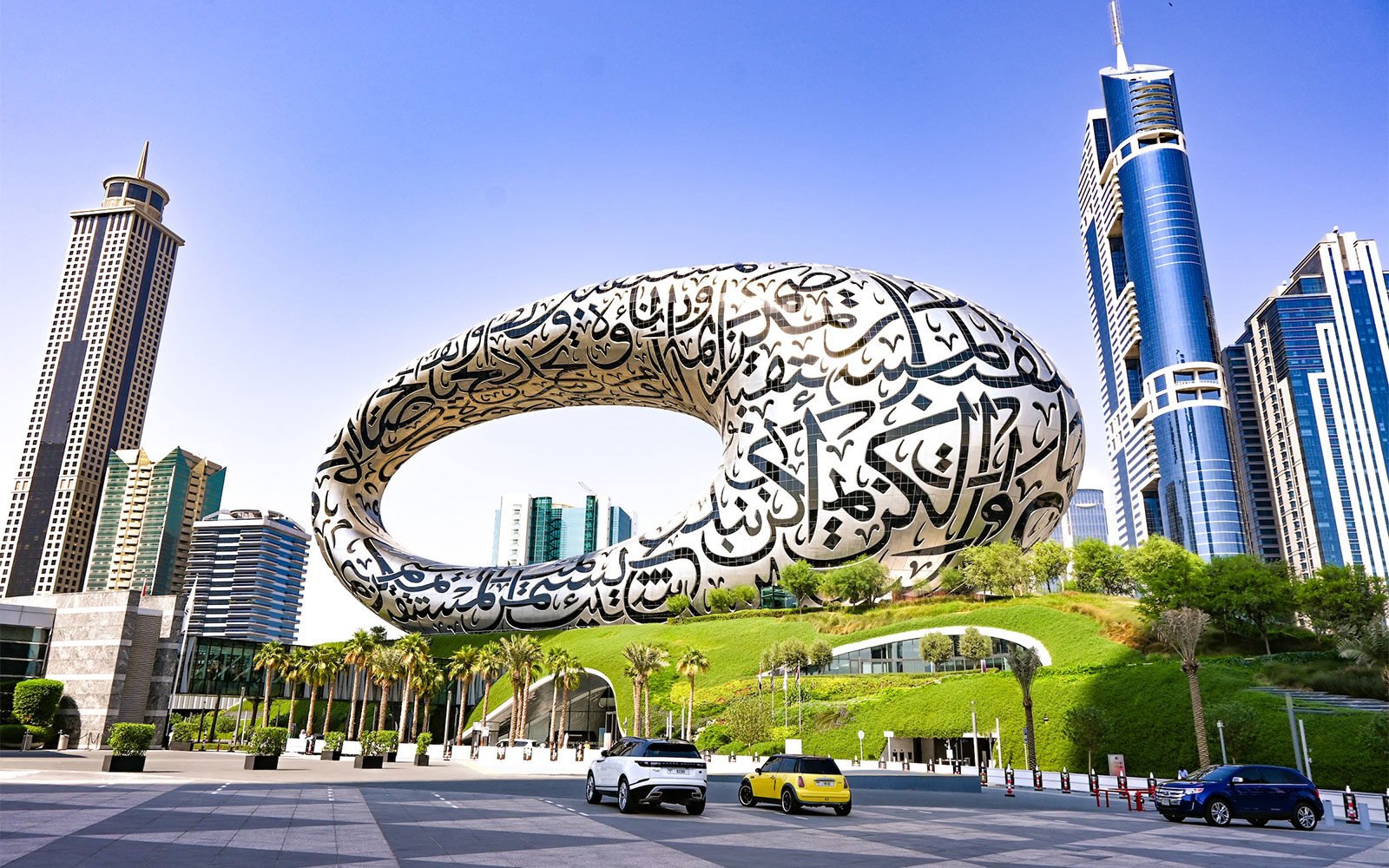
The Museum of the Future
Dubbed the “most beautiful building in the world”, the Museum of the Future is a perfect embodiment of boundless postmodern innovation. A sublime structure of steel and light, this eye-shaped building peers over Sheikh Zayed Road and exhibits a mind-bending display of concepts, experiences, and artefacts exploring the future of science and technology. With interactive experiences journeying through the depths of both space and the mind, this visionary museum isn’t just about showcasing and predicting the brave new world of tomorrow—it’s about opening a dialogue that explores what it means to be human in the context of a rapidly changing world.
True to its purpose, the experience of the Museum of the Future starts with the building itself. Designed by Killa Design – the architects behind Jumeirah Marsa Al Arab – this stunningly unique building is shaped like a torus (an ancient symbol of interconnectedness), with a large void in the centre symbolising unexplored futures. The exterior features 1,000 stainless steel panels inscribed with Arabic calligraphy, cut using computer-aided robotic arms.
Algorithms played a key role in the design, manufacturing, and construction of the Museum of the Future, which is made up of 2,400 diagonally intersecting beams. The complex torus shape was made possible using a parametric design algorithm, and BIM technology was integrated with algorithms to optimise the building’s construction and management.
The Museum of the Future spans seven floors and has five themed exhibitions.
Chapter 1: All Aboard OSS Hope Station
As you enter the museum, an immersive space shuttle-like elevator rockets you to the OSS Hope Station – a futuristic, simulated vision of life in space. The journey itself takes nearly five minutes and has real turbulence and visual effects depicting a liftoff (minus the crushing G-force, of course). Upon ‘landing’, you will enter the command centre – a dazzling holographic display of the solar system, which sees the Moon transformed into a solar energy hub.
Here, visitors can embark on an interplanetary mission – be it as an ambassador on Mars or an asteroid fleet pilot – and engage with an uncanny digital twin.
Chapter 2: Explore the Amazon Rainforest at the Heal Institute
After a journey through the virtual stars, visitors return to the earth in all of its natural splendour at the Heal Institute. Dedicated to the theme of environmental conservation and ecological restoration, this chapter is a mixed-reality simulation of the verdant Amazon rainforest. It’s a grounding contrast from the quietude and darkness of space on the floor above, with vivid wildlife sounds and foliage textures.
Most striking of all is the Vault of Life – a visually-striking DNA library hosting the genetic information of more than 2,400 species. These DNA sequences were digitally mapped by a team of scientists who visited the rainforest specially for this purpose. The specimens are housed in crystal jars and illuminated in garish neon lights – a clever and haunting reminder that genetic diversity is at risk and it’s in our hands to either preserve or erase it.
Chapter 3: Find Screen-Free Calm in Al Waha (The Oasis)
After a journey across the earth and skies, visitors can realign body and mind in Al Waha – The Oasis. This chapter does away with screens and gadgets and encourages visitors to switch off their phones, sit back, and simply bask in a calm display of soothing colours, sound textures, and light patterns. A standout feature here is the interactive meditation dome, which has a specialised vibrational healing experience to encourage a meditative state. It’s the perfect spot to reflect and recharge before venturing down to the next floor, which is where the real fun is.
Chapter 4: Tomorrow Today
In Chapter 4, visitors will find what they likely most expect from the Museum of the Future: robots, drones, and other cutting-edge technologies that are currently being developed or prototyped.
The biggest attraction here is the advanced robotics. The museum’s robodog, developed by Boston Dynamics, always attracts crowds with its incredible agility, aided by 17 joints and machine learning intelligence. It has 360-degree perception and collects both 2D and 3D data as it moves, adapting to complex terrains and environments. And, don’t be surprised if this uncanny digital canine approaches you in the museum lobby, proudly flaunting its range of movements.
Beyond the robodog, the Museum of the Future also has the humanoid robot Ameca, barista robot Bob, and a range of robotic animals including flying penguins.
In this chapter, visitors can also view a range of electric jets, autonomous delivery vehicles, and even a gravity jet suit, offering a glimpse of how new technology can improve transport infrastructure for a better, more convenient tomorrow.
Chapter 5: Future Heroes
Chapter 5 is the final stop in the Museum of the Future, and it’s a playground for the imagination for the museum’s youngest visitors. This area is wide, open, and filled with interactive exhibits designed to spark curiosity and creative thinking. Children can take on the role of climate scientist or robot designer, or venture through digital jungles to learn about biodiversity using augmented reality.
Across its various exhibits – from the DNA specimen library to the agile cyberdogs – the Museum of the Future challenges perceptions and raises some heavy philosophical questions: can humans exist in symbiosis with artificial intelligence without losing some part of ourselves? How might life be preserved in face of a changing climate, and more importantly, why?
Dubai Museum and Al Fahidi Fort
The Museum of the future is deeply thought-provoking and engaging, and it crafts an intriguing vision for what the future of the UAE could hold. But in order to have a fuller appreciation for that vision and what it means, it’s important to fully understand this relatively young nation’s history. To immerse yourself in relics of the distant past and learn more about the journey that led desert Bedouins to found one of the most dynamic global metropolises of today, the Dubai Museum and Al Fahidi Fort in Bur Dubai are absolutely worth a visit
Al Fahidi Fort is the oldest building in Dubai, and it once served as a fortified residence for the ruling family. The structure is a testament to traditional Emirati architecture, constructed with palm wood, coral stone, and a barjeel (wind tower) to promote natural cooling. Over the centuries, it has served as the monarch’s base, a weapons store, and even a prison, before becoming part of the museum under the direction of Sheikh Rashid bin Saeed Al Maktoum.
Just steps away from the fort, the Dubai Museum has a unique and beautifully presented collection of artefacts showcasing life in the UAE before oil, when the land was inhabited by nomadic Bedouins who relied on pearling, fishing, and trading for their livelihood. Here, visitors can explore life-like dioramas and exhibitions including dhow boats, ancient weaponry, and a fascinating range of archaeological finds.
Final Take
Art historian Glenn Lowry famously said that museums are not simply repositories of artefacts, but laboratories of ideas. Both the Museum of the Future and Dubai Museum capture this sentiment beautifully, painting a well-rounded picture of a city that has transformed with frenetic speed while carefully preserving tradition and heritage.
